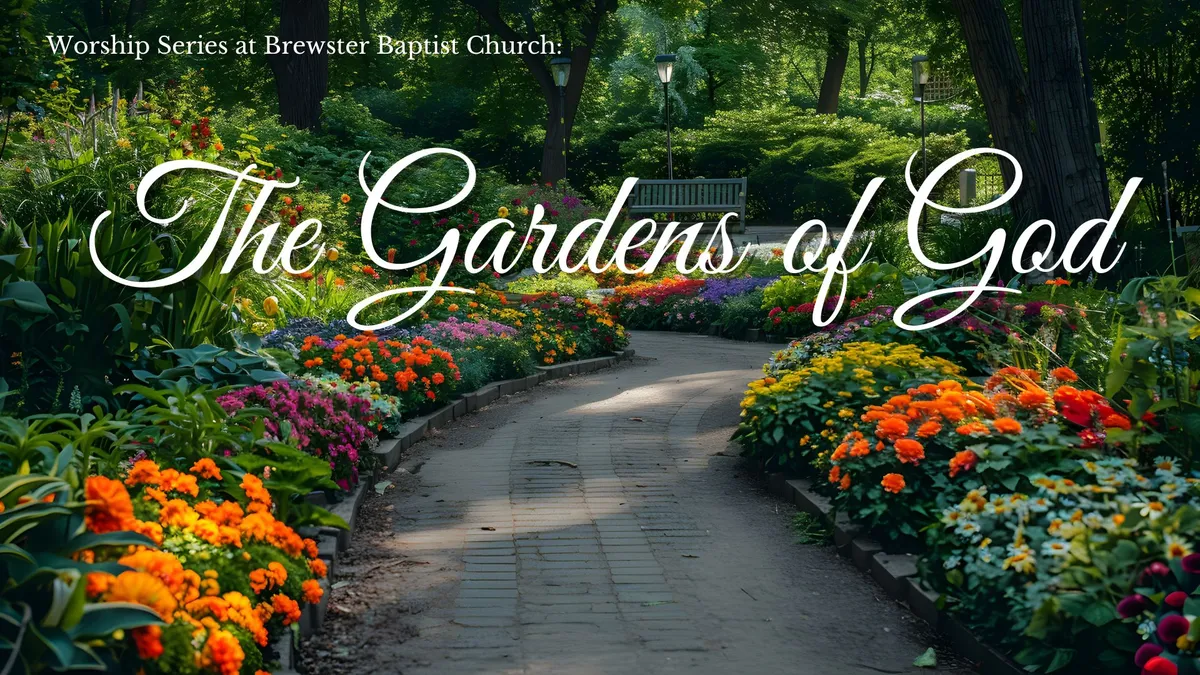The Gardens of God Worship Series
The LORD will guide you continually, And satisfy your soul in drought, And strengthen your bones; You shall be like a watered garden, And like a spring of water, whose waters do not fail.
Isaiah 58.11 (NKJV)

The Bible is rich with imagery and symbolism, and gardens play a significant role in its narrative, reflecting themes of creation, love, betrayal, and redemption. Among the pivotal gardens mentioned in the Bible are the Garden of Eden, the Garden of Love in Song of Solomon, the Garden of Gethsemane, and the Garden of God in Revelation.
The Garden of Eden, described in Genesis 2, is the first and most iconic garden in the Bible. It was a place of beauty, created by God as a dwelling place for humanity. The garden was filled with trees that were pleasing to the eye and good for food, including the tree of life and the tree of the knowledge of good and evil (Genesis 2:8-9).
This garden symbolized a perfect relationship between God and humanity, where Adam and Eve lived in harmony with nature and with each other, free from sin and shame (Genesis 2:25). However, it also became the site of humanity’s first disobedience, marking the beginning of sin and separation from God (Genesis 3:1-7)
In the Song of Solomon, a different kind of garden is described—a garden of human love. Here, Solomon uses garden imagery to express the beauty and intimacy of romantic love. The beloved is likened to a garden, enclosed and locked, symbolizing exclusivity and purity in love (Song of Solomon 4:12-15).
This garden represents a place of mutual delight and satisfaction, where love flourishes. It echoes the harmony and perfection of the Garden of Eden, highlighting the potential for human relationships to reflect divine love.
The Garden of Gethsemane, mentioned in the New Testament, is a stark contrast to the Garden of Eden. It was a place where Jesus went to pray, and it became infamous as the site of his betrayal by Judas (Matthew 26:36-38). In Gethsemane, Jesus faced intense spiritual struggle, praying in anguish as he contemplated the cross (Mark 14:34-36). Gethsemane symbolizes the struggle with sin and the ultimate sacrifice that Jesus made to redeem humanity.
Finally, the Bible concludes with a vision of a future garden in Revelation 22. This garden is part of the New Jerusalem, where God dwells with humanity once more. The river of life flows through it, and the tree of life bears fruit every month, symbolizing eternal life and restoration (Revelation 22:1-2).
This garden represents the ultimate fulfillment of God’s plan for humanity—a return to relationship, free from sin and sorrow.
In the above passages and several others we’ll explore in worship in March and April, we see how the gardens in the Bible serve as powerful symbols of creation, love, betrayal, and redemption.
From the Garden of Eden to the Garden of God in heaven, these spaces reflect the journey of humanity’s relationship with God. Each garden offers a unique perspective on the nature of God and humanity, reminding us of our origins, our struggles, and our ultimate destiny. Through these gardens, the Bible paints a vivid picture of God’s love and desire for reconciliation with humanity.
We hope you’ll enjoy this series and consider participating in a small group as we explore these themes together.
Grace and Peace,
Pastor Doug Scalise
